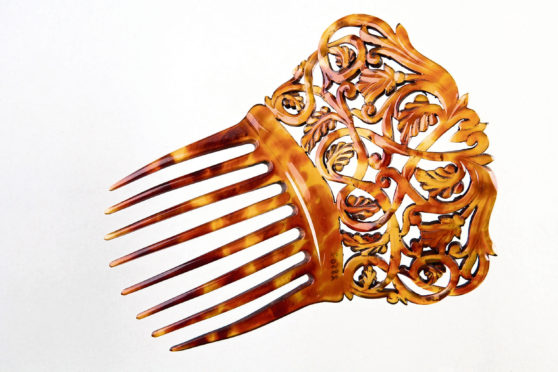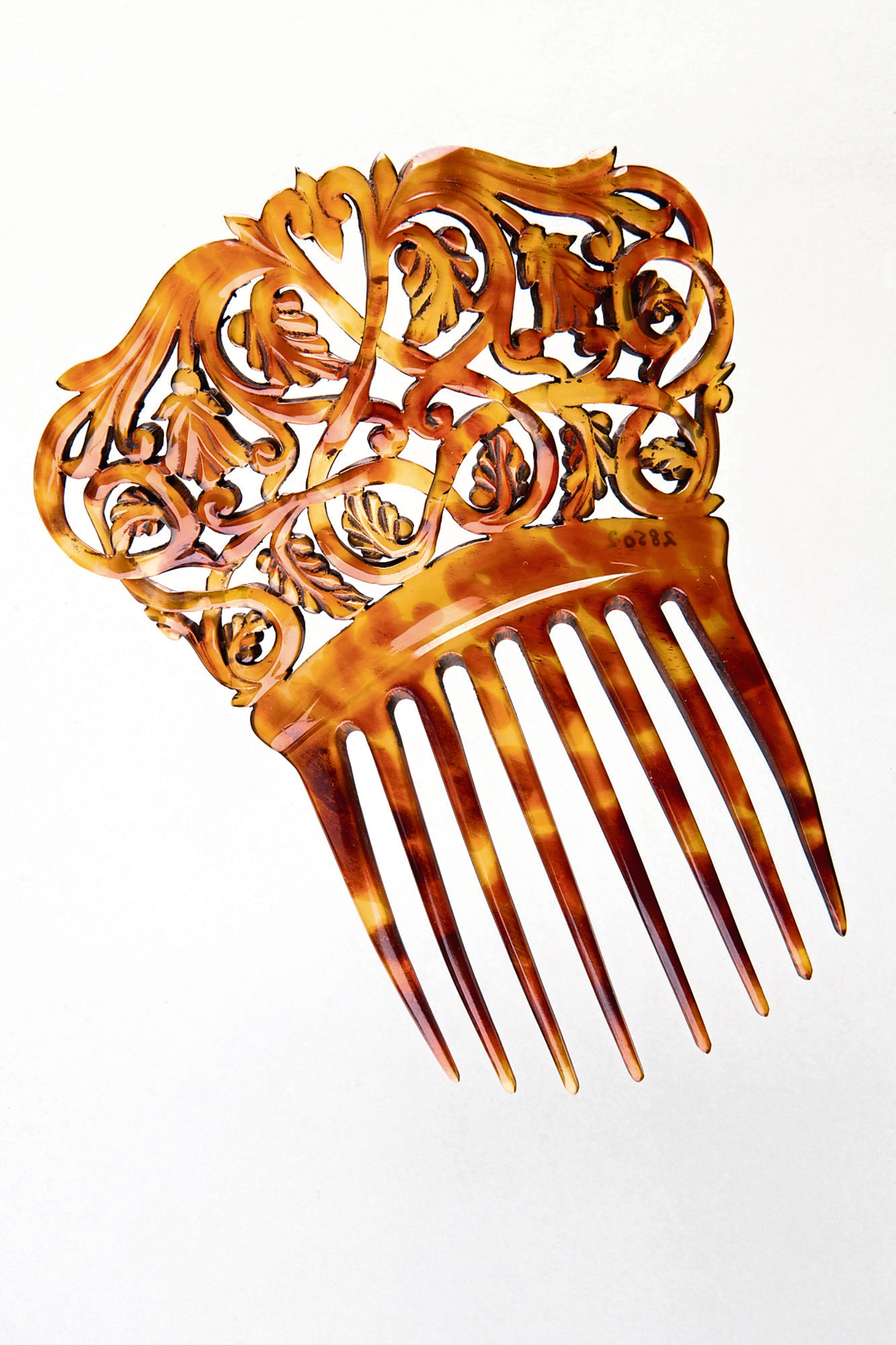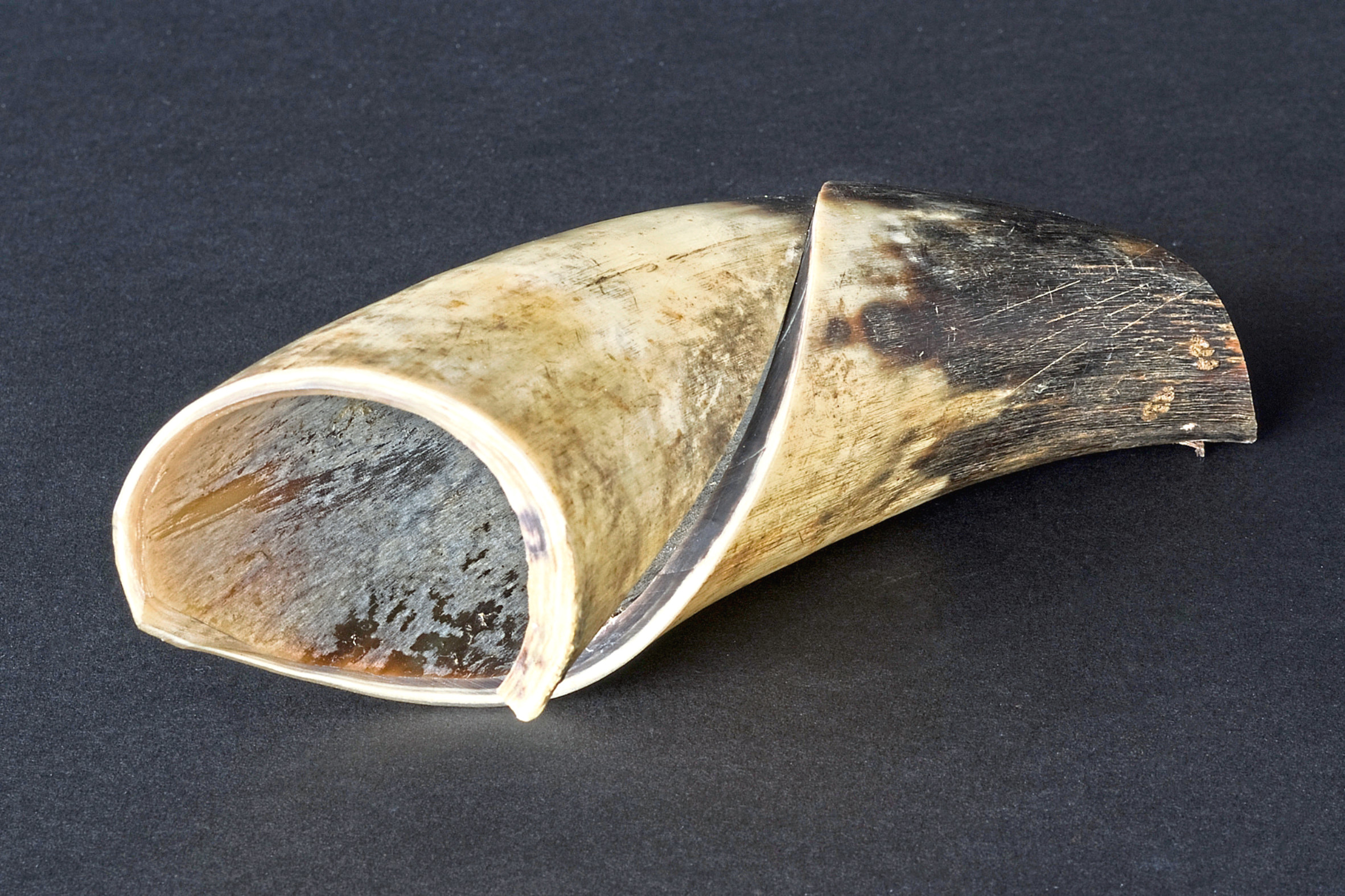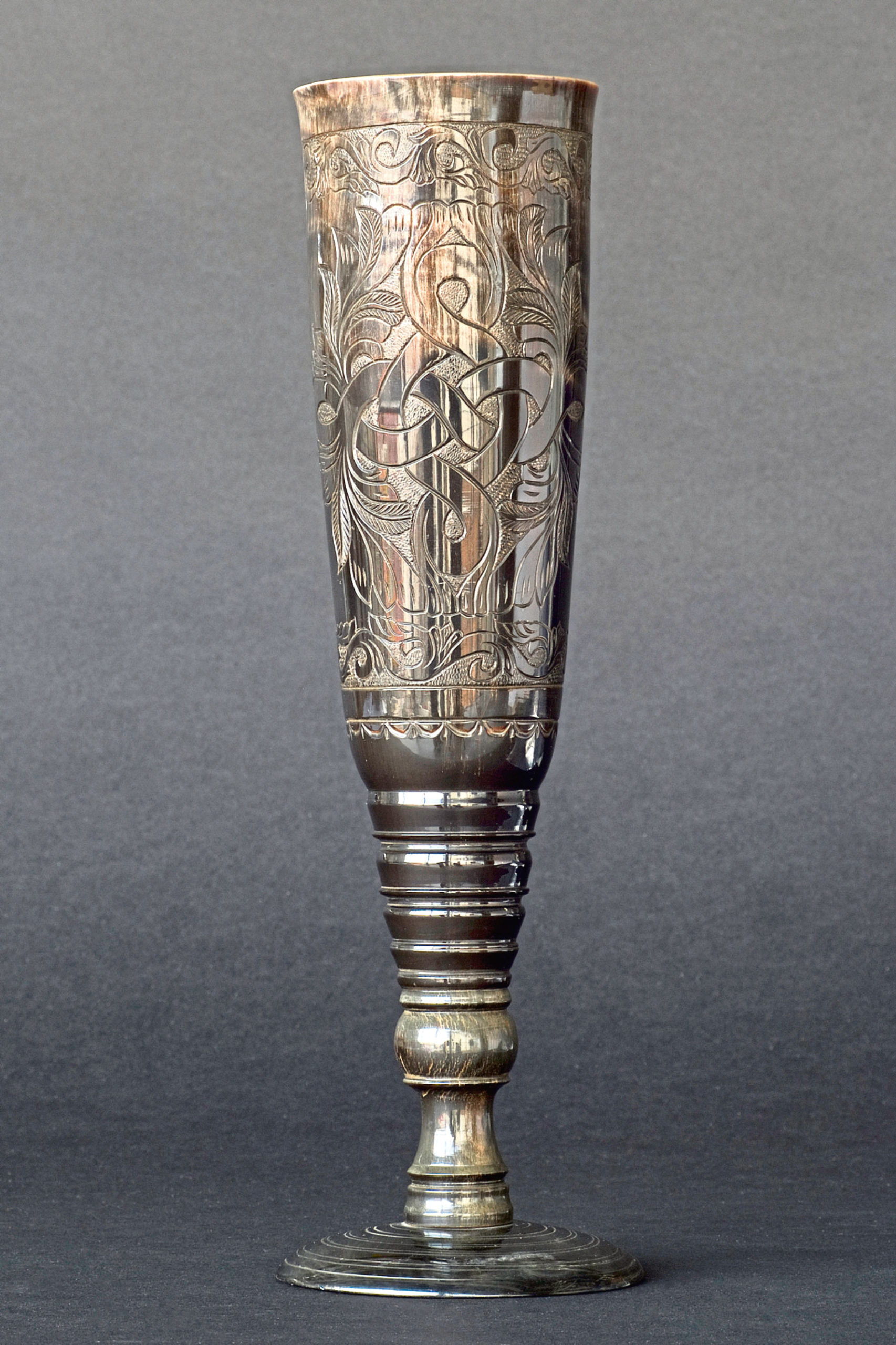Decorative hair combs were a key fashion accessory in the 1800s and early 1900s.
Women wore them in the back of their elaborate hairdos. Wealthy people could afford fancy combs made from tortoiseshell – a rare and expensive material.
This lovely example on the right was made in Aberdeen by S R Stewart & Co at Aberdeen Comb Works on Hutcheon Street.
The mottled colour looks just like tortoiseshell, but it is in fact made from cow’s horn, a material that was readily available in Aberdeen.
The Comb Works were so successful however, that by 1851 they were importing 730,000 horns to make 9 million combs to be sold all over the world.
Aberdeen Comb Works started out around 1830 in King Street but moved to Hutcheon Street in 1835. The company was an early adopter of steam powered machines and descriptions of the premises from the 1800s tell us a lot about how it all worked.
Horn is a natural plastic – horns were first cut diagonally and then flattened using heat and pressure. The comb shape was then cut or stamped out. While still warm, the comb would be shaped and curved. To make it look like tortoiseshell, the horn would be bleached then stained to create the mottled colour.
Finally, the edges and teeth would be smoothed and buffed.
Ordinary dressing combs were less wasteful. The early machines were based on an invention which cut two combs from one piece of horn – the teeth of one comb making the gaps on the other. These twin-cutting machines revolutionised comb-making and were a far cry from the traditional methods used by generations of horners.
S R Stewart & Co continued to employ skilled craftsmen however, who kept these traditions alive – creating beautiful one-off pieces like the buffalo horn goblet.
During the 1960s the Aberdeen Comb Works suffered a series of fires and in 1963 a merger with a Glasgow company brought diversification into modern, synthetic plastics. The firm’s success continued but in 1997 its time in Aberdeen came to an end, and production relocated to the central belt.
In 2012 we were fortunate to receive a donation of a large collection of combs and other products made by the Comb Works – we are still working to catalogue them all! Many examples are available on our website at www.aagm.co.uk
Our Aberdeen
- Monday 24 June, 2pm-3.30pm, free
Marischal College and the Edwardians
- Relive the splendour of the 1906 royal opening of the new extension to Marischal College by King Edward VII and Queen Alexandra through objects, documents, photos and a short film of the event.
Coming Up
- Join us at Aberdeen Maritime Museum to explore the Silver City’s stories through our collections of art, social and maritime history.
These informal dementia-friendly session for adults will take place on Mondays at 2pm–3.30pm from May 27 to July 1. Free – donations welcome. No need to book, just come along. Find out more at www.aagm.co.uk or pick up a leaflet at one our venues.
Aberdeen Art Gallery & Museums:
- Aberdeen Art Gallery (reopening autumn 2019)
- Aberdeen Maritime Museum (open 7 days, admission free)
- The Tolbooth Museum (open 7 days, admission free)
- Aberdeen Treasure Hub Museum Centre
For visiting information go to www.aagm.co.uk
Keep up to date with all the latest news from Aberdeen Art Gallery & Museums by signing up to our e-newsletter at www.aagm.co.uk/mailinglist
Follow us on Facebook, Twitter and Instagram @AbdnArtMuseums













